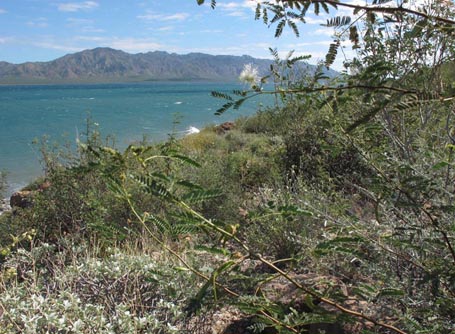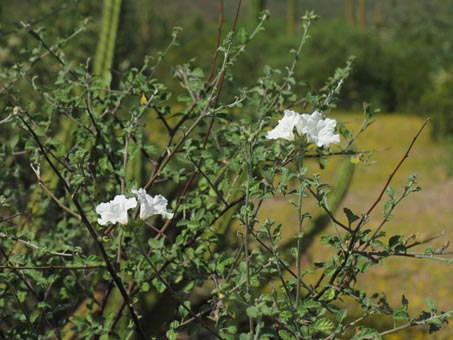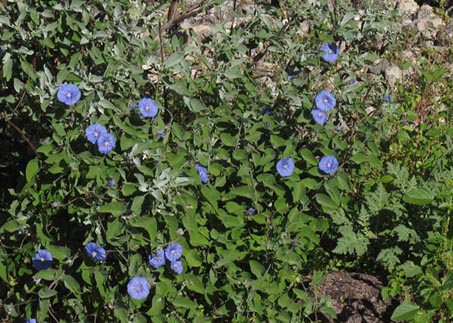This section contains entries about our botanizing in Baja California written for the UC BEE (Oct 2012 to Aug 2021)
and The UC Hive (2022-), monthly newsletters for volunteers and staff of the UC Berkeley Botanical Garden.
Click on any photo for a larger image.
BEE DECEMBER 2012
November Flowers
Mulegé, Baja California Sur — 12 de nov de 2012
We are enjoying a unique experience here in the Baja Desert following unusually prolonged summer rains Aug-Oct and a real drenching brought by the passage of Hurricane Paul along the Pacific coast Oct. 15-17.
The desert is a sea of endless varieties of green; in places the dirt isn’t even visible through the dense vegetation. We’re not the only ones saying that we’ve never seen it this lush, and over such a large area, in probably the last 20 years. At times like these, it’s hard to believe that we are in the middle of one of the most arid regions of the Sonoran Desert. I’ve even seen mosses and liverworts!

Squint and it could be an California oak woodland. Mesquite (Prosopis articulata) and (non)native herbs and grasses (Kallstroemia californica, Bouteloua spp., Chloris virgata).

And the trail is where?
Looking south into Bahía Concepción from near mouth of the bay.
The trail is straight ahead from the middle bottom of the frame!
In the past 6 years, this area has been affected by three major cyclones, each of them bringing heavy rainfall to the mountain range to the west, leading to flash flooding in the Mulegé river valley. The effects of climate change seem all too real here, as the pace of the “50-year flood” has increased to every 2-3 years.
However, not until this year has the coastal area itself received much direct rain. Cacti seem ready to burst and most of the xerophytic shrubs and trees are leafy, although only a handful of species are actually flowering. Ruellia californica (Flor de Campo), Cordia parvifolia (Vara Prieta), Solanum hindsianum (Mariola) and Jacquemontia eastwoodiana (Manto de la Virgen) are probably the most noticeable.

Cordia parvifolia (Boraginaceae)
Vara prieta, Small-leaved cordia.

Jacquemontia eastwoodiana (Convolvulaceae)
Manto de la virgen, Morning glory.

Trianthema portulacastrum (Aizoaceae)
Verdolaga de Cochí, Desert Horse Purslane

Mentzelia adhaerens (Loasaceae) Pega pega; Allionia incarnata (Nyctaginaceae) Trailing windmills.
Much of the flowering is from summer annuals like Manzanilla (Pectis papposa and P. vollmeri, a local endemic), Trianthema portulacastrum (Verdolaga de Cochi), Allionia incarnata var. incarnata, and Amaranthus watsonii (Watson Amaranth, Quelite verde). There are also an abundance of annual grasses adding to the ground cover.
I’m looking forward over the next few months to what the desert will bring.
— Debra Valov, curatorial volunteer







